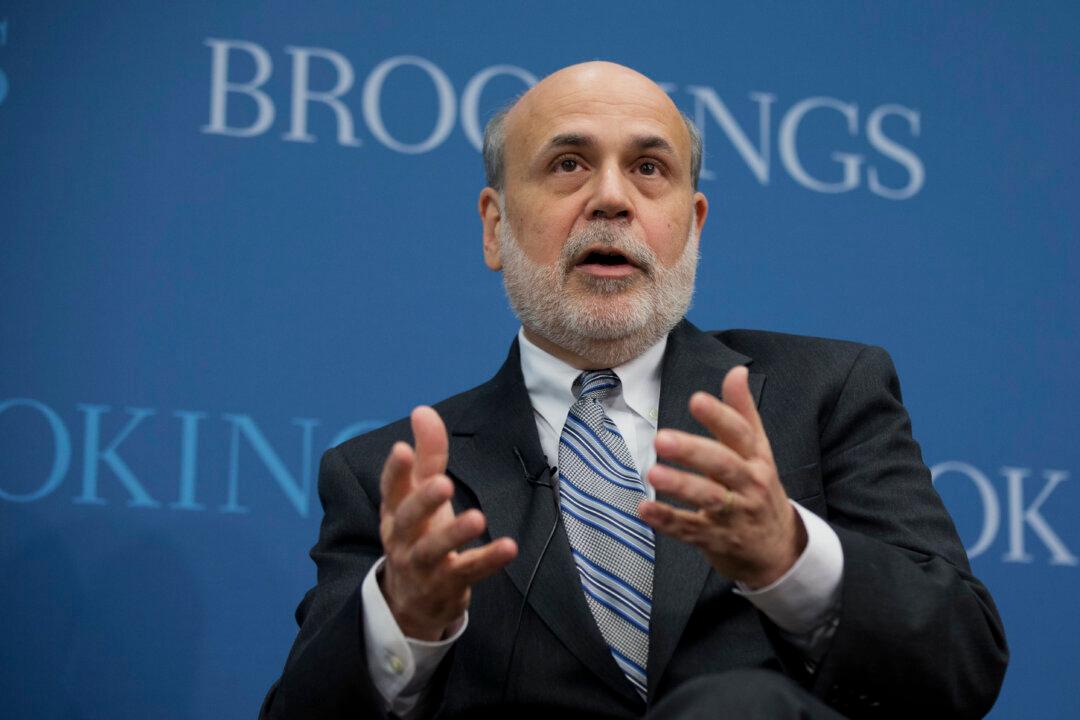Sometimes and only sometimes, economics just works like clockwork. The beginning of 2015 is one of these times: Dollar up, prices down.
Over the past year, the trade-weighted U.S. dollar index rose more than 23 percent. That’s a lot for a currency and it means that dollars are getting scarcer globally and people need to pay more if they want to own them. This means your money is worth more.
The Dollar Index
source: tradingeconomics.com
The rising dollar in international markets is also reflected inside the United States, as prices are dropping across the board. Yesterday, import prices for February saw the largest drop since the Lehman bankruptcy, down a whopping 9.4 percent.
Consumer prices, as well as producer prices also went down in January and February respectively. The phenomenon of falling prices is known as deflation and everybody is scared of it.
source: tradingeconomics.com
Ironically, most mainstream economists and most notably the Federal Reserve are never scared of inflation, or rising prices, and the opposite of deflation. But Why?
Good Deflation
If prices for imported and consumer goods go down, this means you can buy more for the same amount of money you have now. Doesn’t this sound great? In theory, this would mean less money for the companies who sell you stuff, but if producer prices are falling as well, even that argument doesn’t hold.
In fact, in a functioning economy, which is constantly innovating, increases productivity, and has a stable monetary system, mild deflation should be happening all the time and nobody should be scared of it.
Increases in productivity mean you produce more with less—less labor, fewer commodities, and less capital. If you produce more with less, it means you have more products on the market. With constant demand, the prices of these products should fall.
source: tradingeconomics.com
We have seen this happening over time especially in the electronics industry, where increases in productivity due to competition have lowered prices and increased quality at the same time.
Because you are using fewer inputs as well, the margin for the producer should stay the same and they don’t need to fear going bankrupt.
Does less labor input also mean lower wages? Yes! But because prices for goods and services are also falling, you should be able to buy the same amount, even if your total wage income is reduced. On the upside, you also need to work less and have more free time.
Doesn’t this sound amazing? Shouldn’t we want deflation, rather than its inflationary counterpart where oftentimes wages don’t rise along with consumer prices and you have to work more to be able to afford the same quality of living? The answer is: It depends on the monetary system.
Debt Needs Inflation
The problem is that our monetary system is based on debt. Both our governments, corporations, and consumers are head over heels in debt. If your money becomes worth more because of the price deflation, it also means the debt you owe increases in value because you have to give up more goods, labor, or assets to pay it back.
If some people don’t make it and have to default on their debt, it can lead to the infamous deflationary spiral, last seen in 2008, where some defaults lead to other defaults and eventually everybody is broke and the economy lies in ruins.
The Fed does not want to see this happening. This is why it pushed through inflationary policies such as quantitative easing and persistently low interest rates. These policies make it easy to service debt and encourage the government and the private sector to take on new debt, which stimulates economic activity.
That’s great for the short term, but eventually that debt needs to be paid back. And if the increase in debt doesn’t lead to increases in productivity (which is hasn’t so far), it will be hard to repay this debt in real terms anyway.
In fact, it seems the Fed has sown the seeds of its own destruction as much of the extra money went into the expansion of productive capacity either onshore or offshore. However, much of this is not really needed.
Case in point: Because of too much productive power, capacity utilization keeps languishing around 79 percent, below the previous peak reached at the last financial crisis. Excess capacity keeps a lid on prices and so does a labor market, which is still oversupplied, despite the recent drop in the unemployment rate.
Now we understand why everybody is scared of inflation. But are the current policies the right ones to fix the problem?





